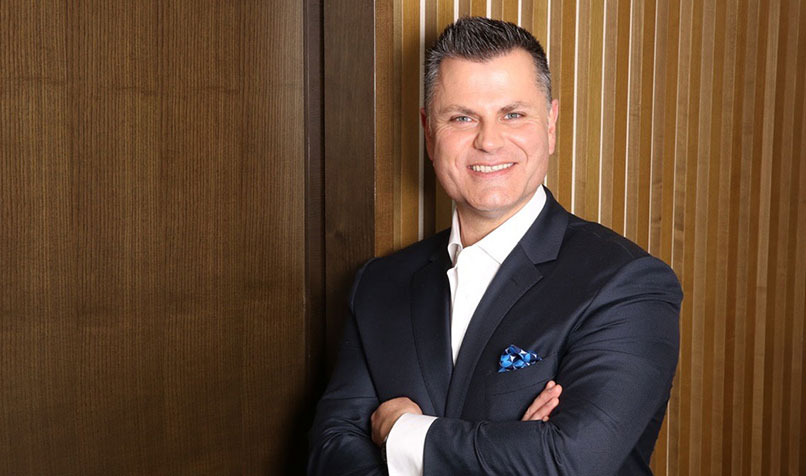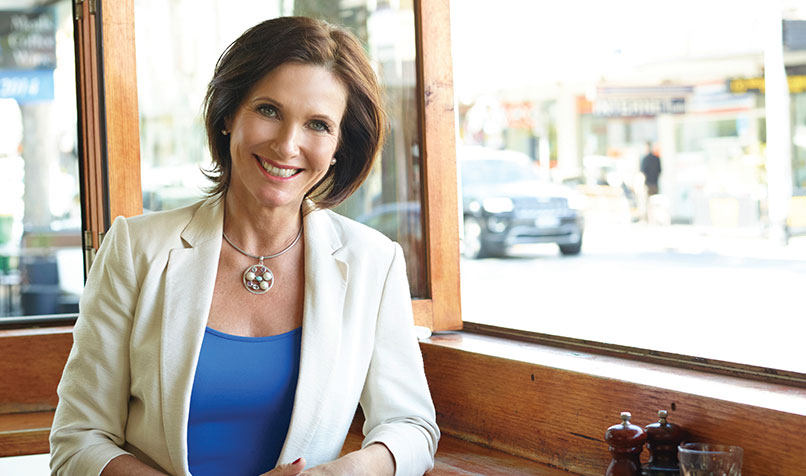Loading component...
At a glance
- Fear is said to be among the most contagious of emotions, with the power to filter down through the ranks of an organisation.
- Operating in unprecedented levels of uncertainty may have created a climate of fear, and the advice for leaders is to focus on core values and principles.
- In difficult times, the expectation of leaders is not the ability to predict or control the future, but a sense of reliability and a focus on making decisions that are in the best interest of everyone.
By Engel Schmidl
English philosopher Thomas Hobbes wrote, “Fear and I were born twins together”. This is a sardonic reflection on the circumstances of his birth – Hobbes was born prematurely to a mother supposedly panicked by the menacing news of the Spanish Armada approaching British shores in 1588.
Hobbes’s exploration of the concept of fear, as well as the role fear plays in shaping society and ways it can be manipulated for political and social gain, is central to his influential work, which is still relevant more than four centuries later.
Fear has played a starring role during the annus horribilis that was 2020. Raging bushfires, geopolitical tensions, climate anxiety and the spread of the COVID-19 pandemic, with its health and economic consequences spilling well into 2021, have stoked dread, anxiety and uncertainty for individuals and businesses.
From small business owners through to heads of state, leaders were asked thorny questions that many struggled to answer, let alone sugarcoat.
Leaders have had to step up in a big way, and with the end to disruption and uncertainty nowhere in sight, the only way forward is to learn to live with – and lead through – fear.
Looking fear in the eyes

For much of 2020, John Karagounis had a up close and personal view of how business leaders dealt with staring into the abyss. Some were paralysed by fear, while others were energised by the challenge.
As CEO and managing director of The CEO Circle, roles he has held for the past 12 years, Karagounis has close daily contact with CEOs and other C-suite executives from across Australia and from all types of organisations.
The Circle holds regular meetings with groups of no more than 12 leaders confidentially discussing the issues and challenges they are facing, from professional to personal. The small size and intimacy of The Circle groups mean that many leaders can let down their guard.
Karagounis says fear of the unknown consumed many leaders he talked to last year, especially during the early days of the pandemic. “We’ve never faced these times before. We’ve never gone through a pandemic that has impacted business and stopped economies overnight,” he says.
Leadership expert Margie Warrell has also carefully observed how different leaders reacted and handled the situation as the COVID-19 crisis unfolded.
"Those who held to their purpose and didn't lose sight of their 'why' were the ones who were able to sustain through this whole period. They had clarity on what they needed to do and clarity on why they were doing it."
The author of several books on leadership and maximising human potential, Warrell says the COVID-19 pandemic has been such an unsettling experience because it upended certainties.
The existential nature of the crisis, which ranged from anxiety about personal health through to the potential collapse of the global economy, allowed fear to creep into the darkest corners of our minds, she says.
This highly personalised manifestation of fear led to doubt and insecurity for even some of the most resilient people. For that reason, Warrell advises that, before leading others, leaders manage their mindset by homing in on their core values and principles.
“We must lead ourselves first, and how well we do that will impact how well we can embolden others to take the courageous actions that their fears would rather they didn’t take,” says Warrell. “With so much outside our control, we have to double down on focusing on what lays within it.
“A leader’s ability to embolden others to be braver is directly proportional to their willingness to take action in the presence of their fears and misgivings. The essence of courage is taking action amid the risks, uncertainty and ambiguity. We’ve been dealing with that in unprecedented proportions throughout 2020.”
Leading others through the fear

When the outside world cannot provide us with the certainty we seek, we should look for it within, “grounding ourselves in ‘self-certainty’,” says Warrell.
“I invite leaders to reflect on who they want to be as a leader – decisive, optimistic, calm, inspiring, compassionate, brave? Getting clarity about who you want to be for those in your charge is a vital foundation for good leadership.
“Emotions are contagious – for better or worse,” says Warrell, “and leaders need to harness the power of emotional contagion in positive ways.”
People look to leaders, often with a critical eye, parsing for inconsistencies and weaknesses. This is why, Warrell argues, leaders act as an “emotional barometer”, especially in times of crisis. “People want to count on the person in charge to make good quality decisions under pressure.
They know those in charge can’t predict or control the future, but when they can trust that they are at least in control of themselves, capable of making sound choices that serve the best interests of those in their charge, it provides a form of psychological safety net.”
In the world of investing, American business tycoon and philanthropist Warren Buffett has called fear and greed “super-contagious diseases”.
Similarly, Warrell says anxiety can run rampant through an organisation if the leadership group appears spooked.
“Fear is probably the most contagious emotion of all. Left unchecked, it will filter down through the organisation, driving smart, capable people to make over-cautious, short-sighted decisions. So, leaders have to act with the courage, the calm and the deliberate optimism they want to instil in others.”
Karagounis says one thing he has learned from watching business leaders operating under extreme stress is that leaders must display “excessive decisiveness”, which is the ability to take action and move forward with enough velocity to carry people with them.
Without discounting the need for due diligence and rational and reasonable analysis, he says leaders who provide their teams with a clear and distinct vision of where they are going, and a road map to get there, create a sense of momentum as well as purpose within an organisation.
“Excessive decisiveness is about accelerating the way we make decisions and solve problems. To do that, leaders must have the resilience to back themselves and back their teams,” he says.
“If the COVID-19 crisis taught us anything about organisations, it is that we can get things done a lot faster and more efficiently than we previously thought possible.”
Suppose a leader is seen to be prevaricating or procrastinating. In that case, Karagounis says, others will see the behaviour as a sign that the leader is confused, overwhelmed or even clueless about the way forward. From there, it is a short path to losing the trust, support and cooperation of those you lead.
Karagounis says excessive decisiveness requires leaders to focus on three key areas: concise and practical communications, flexible tactics and strategies, and smart deployment of the resources at hand.
“Excessive decisiveness requires confidence and composure to advance on opportunities and tackle problems without leaning too heavily on the comforts of collaboration and consensus.
“In testing times, leaders might lose the confidence to do this, but it is something leaders must do if they are to find clarity in uncertain times.”
CPA Library resource:
Walking with fear

Dr Susan David, psychologist at Harvard Medical School, defines courage as the capacity to first face difficult emotions, thoughts and stories with curiosity and compassion, and then to move in the direction of your values.
“Courage is not the absence of fear. Courage is fear walking,” she says.
Warrell says the significant paradigm shift in leadership to come out of the COVID-19 crisis will be the acceptance that we have to lead decisively through uncertainty.
“We cannot wait for the uncertainty to pass before we make plans and move forward. We have to embrace uncertainty as a norm and be willing to make the best decisions we can in the moment and then be brave enough to iterate on them often.”
Karagounis sees the past year as a monumental learning experience, particularly for leaders who may have coasted through good times and then suddenly had to face the scale and complexity of the pandemic.
He says those who had the self-awareness to recognise their fear and use it as a guiding light emerged stronger than before. “They could provide a beacon on the hill for their people,” he says.
“Those who held to their purpose and didn’t lose sight of their ‘why’ were the ones who were able to sustain through this whole period. They had clarity on what they needed to do and clarity on why they’re doing it.
“Did they have change how they were doing things? Absolutely. They failed at times, but they treated those failures as gifts. They had the mindset to look at the failures and learn quickly from them.”
As Hobbes pointed out four centuries ago, fear is part of the human condition. Without it, humans would never have evolved and survived. When we deny the existence of fear, pretend it doesn’t exist or wish it away, we tell ourselves a lie that exposes us to even greater dangers.
Having the courage to walk with fear and understanding how our faltering footsteps can lead and inspire others might be one of the great leadership lessons to emerge from the beginning of the 21st century.

